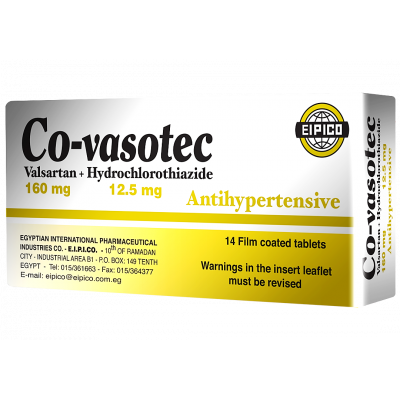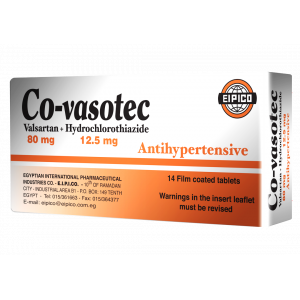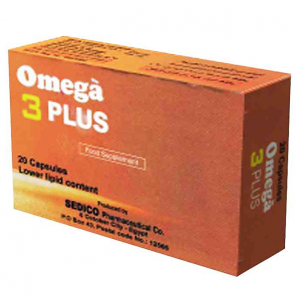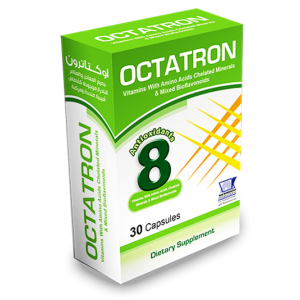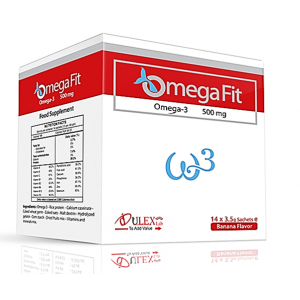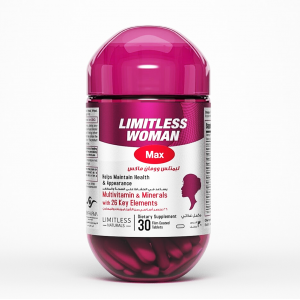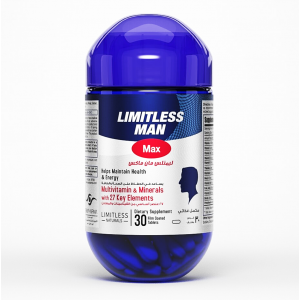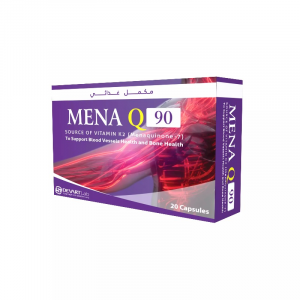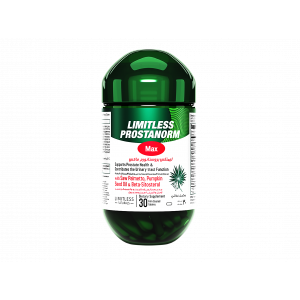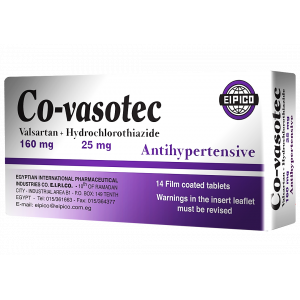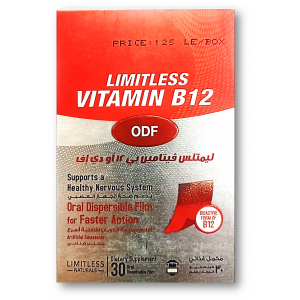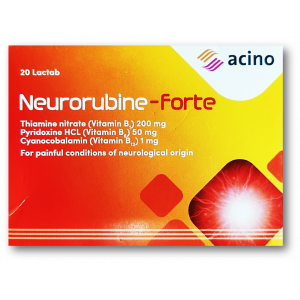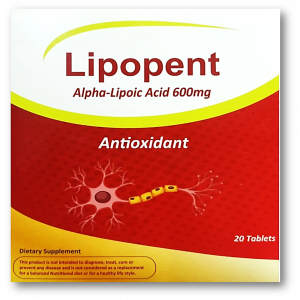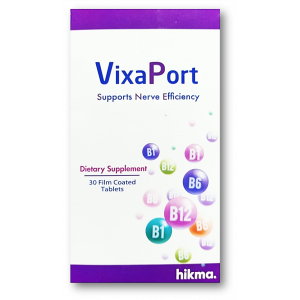- Anti-hestaminic & Respiratory Drugs (14)
- Anti-inflammatory Drugs (133)
- Baby & Mom (1112) +-
- Baby & Mom > Bath, skin & Hair > Skin Care > wibes (47)
- Beauty (2387) +-
- Beauty > Skin Care > whitening (230)
- Chemotherapy & Immune Response (263) +-
- Chemotherapy & Immune Response > ANTI-FUNGAL (2)
- Chemotherapy & Immune Response > Chemotherapeutic Agents > Hormone Antagonists >Enzyme Inhibitors (85)
- CIRCULATORY DISTURBANCE AGENTS (15)
- CORTECOSTEROIDS (6)
- Diet & Fitness Products (186) +-
- DRUG AFFECTING CENTRAL NERVOUS SYSTEM (138)
- Drugs affecting CNS >Anti- epileptic (46)
- LIVER SUPPORT>MULTIVITAMINS (22)
-
Medical Supplies (445)
+-
- Chemicals & Disinfectants (18)
- Dental Supplies (31)
- Devices & Instruments (7)
- Diabetic Supplies (91)
- General Medical Supplies (21)
- I.V & Medical Solution (0)
- Intensive Care Unit & Anesthesia Supplies (0)
- Kindney Unit Supplies (13)
- Lab Supplies (1)
- Miscellaneous (22)
- Neonatal Unit Supplies (0)
- Operation Room Supplies (4)
- Sanitary (5)
- Sterilization Supplies (0)
- Surgical Sutures (4)
- Syringes (2)
-
Medicines & Health (2163)
+-
- Allergy & Sinus (84)
- Children's Health Care (46)
- Cough, Cold & Flu (257)
- Digestive Health & Nausea (178)
- Ear, Nose & Throat Care (148)
- Eye Care (102)
- Feminine Care (283)
- Foot Care (3)
- Orthopaedic Appliances (0)
- Pain Relief & Management (180)
- Pill Organizer (0)
- Skin Treatments (633)
- Sleep & Snoring Aids (0)
- Support & Braces (7)
- Medicines & health > Gout releif (34)
- Natural & Organic Products (58) +-
- OTC > Analgesics > Anti-inflammatory Drugs (32)
-
Personal Care (2688)
+-
- Bath & Body (214)
- Deodorant & Anti-perspirants (159)
- Ear, Nose & Throat Care (141)
- Eye Care (108)
- Feminine Care (317)
- Foot Care (10)
- Hair Care (346)
- Home Tests & Monitorings (14)
- Incontinence (7)
- Lip Care (19)
- Massage & Relaxation (14)
- Natural & Organic Personal Care (6)
- Oral Care (76)
- Pregnancy & Fertility (52)
- Shaving & Grooming (55)
- Sun Care (52)
- Prescribtion drugs > cardiovascular system > Hypertention drugs (201)
-
Prescription Drugs (2157)
+-
- Analgesics (149)
- Cardiovascular System (273)
- Drugs Affecting CNS (155)
- Drugs Affecting Musculoskeletal System (46)
- Drugs Used In Infections (28)
- Ear & Nose Drugs (2)
- Endocrine System (124)
- Gastrointestinal Tract (178)
- Gastrointestinal Tract (165)
- Miscellaneous (2)
- Nutrients & Blood Electrolytes (0)
- Obstetric & Gynaecology Disorders (1)
- Respiratory System (96)
- Topical Preparations (21)
- Urinary Tract Disorders (12)
- Vaccines (0)
- Prescription Drugs > Cardiovascular System > Anti-hypertensive drugs > Duiretics > Loop duiretics (41)
- prescription drugs > cardiovascular system >Anti-hypertensive drugs > duiretics > Aldosterone antagonist duiretics (62)
- prescription drugs > cardiovascular system >Anti-hypertensive drugs > duiretics > duiretic combinations (59)
- prescription drugs > cardiovascular system >Anti-hypertensive drugs > duiretics > loop duiretics (59)
- Prescription Drugs > Gastrointestinal Tract > Liver treatment (46)
- Sexual Wellness (165) +-
- strong anti-emetic & adjuvent used with anti-neoplastic (1)
- Vitamins & Minerals Supplements (393)
- Vitamins & Supplements> folic acid (1602) +-
Ex Tax: 33EGP
Example
You can return the product within 14 days of purchase.
ReturnsYou can return the product within 14 days of purchase.

Composition
Co-vasotec 80/12.5 mg film coated tablet contains:
Valsartan ..................................................................................... 80 mg
Hydrochlorothiazide ............................................................. 12.5 mg
Co-vasotec 160/12.5 mg film coated tablet contains:
Valsartan .................................................................................. 160 mg
Hydrochlorothiazide ............................................................ 12.5 mg
Co-vasotec 160/25 mg film coated tablet contains:
Valsartan ................................................................................... 160 mg
Hydrochlorothiazide ……………………………................….…..… 25 mg
Inactive ingredients:
Povidone k25, microcrystalline cellulose PH 101, croscarmellose sodium, microcrystalline cellulose PH 102, magnesium stearate, colloidal silicone dioxide, hydroxypropyl methylcellulose 2910, polyethylene glycol 400, polyethylene glycol 6000, titanium dioxide, iron oxide red (Co-vasotec 80/12.5 mg and Co-vasotec 160/12.5 mg), iron oxide yellow.
Therapeutic Indications
Treatment of essential hypertension in adults.
Co-vasotec is indicated in patients whose blood pressure is not adequately controlled on valsartan or hydrochlorothiazide monotherapy.
Dosage and Administration
Dosage:
The recommended dose of Co-vasotec X/Y mg is one film-coated tablet once daily. Dose titration with the individual components is recommended. In each case, up-titration of individual components to the next dose should be followed in order to reduce the risk of hypotension and other adverse events.
When clinically appropriate, direct change from monotherapy to the fixed combination may be considered in patients whose blood pressure is not adequately controlled on valsartan or hydrochlorothiazide monotherapy, provided the recommended dose titration sequence for the individual components is followed.
The clinical response to Co-vasotec should be evaluated after initiating therapy and if blood pressure remains uncontrolled, the dose may be increased by increasing either one of the components to a maximum dose of Co-vasotec 320/25 mg.
The antihypertensive effect is substantially present within 2 weeks.
In most patients, maximal effects are observed within 4 weeks. However, in some patients, 4-8 weeks treatment may be required. This should be taken into account during dose titration.
Administration:
Co-vasotec can be taken with or without food and should be administered with water.
Special Populations:
Renal impairment:
No dose adjustment is required for patients with mild to moderate renal impairment (Glomerular Filtration Rate (GRF) ≥ 30 ml/min). Due to the hydrochlorothiazide component, Co-vasotec is contraindicated in patients with severe renal impairment (GFR < 30 ml/min) and anuria.
Concomitant use of valsartan with aliskiren is contraindicated in patients with renal impairment (GFR < 60 ml/min/1.73 m2).
Diabetes Mellitus:
Concomitant use of valsartan with aliskiren is contraindicated in patients with diabetes mellitus.
Hepatic impairment:
In patients with mild to moderate hepatic impairment without cholestasis the dose of valsartan should not exceed 80 mg.
No adjustment of the hydrochlorothiazide dose is required for patients with mild to moderate hepatic impairment. Due to the valsartan component, Co-vasotec is contraindicated in patients with severe hepatic impairment or with biliary cirrhosis and cholestasis.
Elderly:
No dose adjustment is required in elderly patients.
Pediatric population:
Co-vasotec is not recommended for use in children below the age of 18 years due to a lack of data on safety and efficacy of valsartan/hydrochlorothiazide.
Contraindications
Hypersensitivity to valsartan, hydrochlorothiazide, other sulfonamide-derived medicinal products or to any of the excipients.
During pregnancy.
Severe hepatic impairment, biliary cirrhosis and cholestasis.
Severe renal impairment (creatinine clearance < 30 ml/min), anuria.
Refractory hypokalaemia, hyponatraemia, hypercalcaemia, and symptomatic hyperuricaemia.
The concomitant use of Co-vasotec with aliskiren-containing products is contraindicated in patients with diabetes mellitus or renal impairment (GFR < 60 ml/min/1.73 m2).
Warnings and Precautions
Serum electrolyte changes:
Valsartan:
Concomitant use with potassium supplements, potassium-sparing diuretics, salt substitutes containing potassium, or other agents that may increase potassium levels (heparin, etc.) is not recommended.
Monitoring of potassium should be undertaken as appropriate.
Hydrochlorothiazide:
Hypokalemia has been reported under treatment with thiazide diuretics, including hydrochlorothiazide. Frequent monitoring of serum potassium is recommended.
Treatment with thiazide diuretics, including hydrochlorothiazide, has been associated with hyponatremia and hypochloremic alkalosis. Thiazides, including hydrochlorothiazide, increase the urinary excretion of magnesium, which may result in hypomagnesemia. Calcium excretion is decreased by thiazide diuretics. This may result in hypercalcemia.
As for any patient receiving diuretic therapy, periodic determination of serum electrolytes should be performed at appropriate intervals.
Sodium and/or Volume-depleted patients:
Patients receiving thiazide diuretics, including hydrochlorothiazide, should be observed for clinical signs of fluid or electrolyte imbalance.
In severely sodium-depleted and/or volume-depleted patients, such as those receiving high doses of diuretics, symptomatic hypotension may occur in rare cases after initiation of therapy with Co-vasotec.
Sodium and/or volume depletion should be corrected before starting treatment with Co-vasotec.
Patients with severe chronic heart failure or other conditions with stimulation of the renin-angiotensin- aldosterone system:
In patients whose renal function may depend on the activity of the renin-angiotensin-aldosterone system (e.g. patients with severe congestive heart failure), treatment with angiotensin converting enzyme inhibitors has been associated with oliguria and/or progressive azotaemia, and in rare cases, with acute renal failure and/or death. Evaluation of patients with heart failure or post-myocardial infarction should always include assessment of renal function. The use of valsartan /hydrochlorothiazide in patients with severe chronic heart failure has not been established.
Hence, it cannot be excluded that because of the inhibition of the renin-angiotensin-aldosterone system, the application of Co-vasotec as well may be associated with impairment of the renal function.
Co-vasotec should not be used in these patients.
Renal artery stenosis:
Co-vasotec should not be used to treat hypertension in patients with unilateral or bilateral renal artery stenosis or stenosis of the artery to a solitary kidney, since blood urea and serum creatinine may increase in such patients.
Primary hyperaldosteronism:
Patients with primary hyperaldosteronism should not be treated with Co-vasotec as their renin-angiotensin system is not activated.
Aortic and Mitral valve stenosis, Hypertrophic Obstructive Cardiomyopathy:
As with all other vasodilators, special caution is indicated in patients suffering from aortic or mitral stenosis, or Hypertrophic Obstructive Cardiomyopathy (HOCM).
Renal impairment:
No dosage adjustment is required for patients with renal impairment with a creatinine clearance ≥ 30 ml/min. Periodic monitoring of serum potassium, creatinine and uric acid levels is recommended when Co-vasotec is used in patients with renal impairment.
The concomitant use of ARBs – including valsartan – or of ACEIs with aliskiren is contraindicated in patients with renal impairment (GFR < 60 mL/min/1.73 m2).
Kidney transplantation:
There is currently no experience on the safe use of valsartan /hydrochlorothiazide in patients who have recently undergone kidney transplantation.
Hepatic impairment:
In patients with mild to moderate hepatic impairment without cholestasis, Co-vasotec should be used with caution. Thiazides should be used with caution in patients with impaired hepatic function or progressive liver disease, since minor alterations of fluid and electrolyte balance may precipitate hepatic coma.
History of angioedema:
Angioedema, including swelling of the larynx and glottis, causing airway obstruction and/or swelling of the face, lips, pharynx, and/or tongue has been reported in patients treated with valsartan; some of these patients previously experienced angioedema with other drugs including ACE inhibitors. Co-vasotec should be immediately discontinued in patients who develop angioedema, and Co-vasotec should not be readministered.
Systemic lupus erythematosus:
Thiazide diuretics, including hydrochlorothiazide, have been reported to exacerbate or activate systemic lupus erythematosus.
Other metabolic disturbances:
Thiazide diuretics, including hydrochlorothiazide, may alter glucose tolerance and raise serum levels of cholesterol, triglycerides and uric acid. In diabetic patients, dosage adjustments of insulin or oral hypoglycaemic agents may be required.
Thiazides may reduce urinary calcium excretion and cause an intermittent and slight elevation of serum calcium in the absence of known disorders of calcium metabolism. Marked hypercalcaemia may be evidence of underlying hyperparathyroidism. Thiazides should be discontinued before carrying out tests for parathyroid function.
Photosensitivity:
Cases of photosensitivity reactions have been reported with thiazide diuretics. If photosensitivity reaction occurs during treatment, it is recommended to stop the treatment. If a readministration of the diuretic is deemed necessary, it is recommended to protect exposed areas to the sun or to artificial UVA.
Pregnancy:
Angiotensin II Receptor Antagonists (AIIRAs) should not be initiated during pregnancy. Unless continued AIIRAs therapy is considered essential, patients planning pregnancy should be changed to alternative antihypertensive treatments
which have an established safety profile for use in pregnancy. When pregnancy is diagnosed, treatment with AIIRAs should be stopped immediately, and, if appropriate, alternative therapy should be started.
Acute Angle-Closure Glaucoma:
Hydrochlorothiazide, a sulfonamide, has been associated with an idiosyncratic reaction resulting in acute transient myopia and acute angle-closure glaucoma. Symptoms include acute onset of decreased visual acuity or ocular pain and typically occur within hours to week of a drug initiation. Untreated acute-angle closure glaucoma can lead to permanent vision loss.
The primary treatment is to discontinue hydrochlorothiazide as rapidly as possible. Prompt medical or surgical treatment may need to be considered if the intraocular pressure remains uncontrolled. Risk factors for developing acute angle closure glaucoma may include a history of sulfonamide or penicillin allergy.
General:
Caution should be exercised in patients who have shown prior hypersensitivity to other angiotensin II receptor antagonists. Hypersensitivity reactions to hydrochlorothiazide are more likely in patients with allergy and asthma.
Dual blockade of the Renin-Angiotensin-Aldosterone System (RAAS):
There is evidence that the concomitant use of ACE-inhibitors, angiotensin II receptor blockers or aliskiren increases the risk of hypotension, hyperkalemia and decreased renal function (including acute renal failure). Dual blockade of RAAS through the combined use of ACE-inhibitors, angiotensin II receptor blockers or aliskiren is therefore not recommended.
If dual blockade therapy is considered absolutely necessary, this should only occur under specialist supervision and subject to frequent close monitoring of renal function, electrolytes and blood pressure.
ACE-inhibitors and angiotensin II receptor blockers should not be used concomitantly in patients with diabetic nephropathy.
Non-Melanoma Skin Cancer:
Photosensitizing actions of hydrochlorothiazide could act as a possible mechanism for NMSC (Non-Melanoma Skin Cancer).
Patients taking hydrochlorothiazide should be informed of the risk of NMSC and advised to regularly check their skin for any new lesions and promptly report any suspicious skin lesions. Possible preventive measures such as limited exposure to sunlight and UV rays and, in case of exposure, adequate protection, should be advised to the patients in order to minimize the risk of skin cancer. Suspicious skin lesions should be promptly examined potentially including histological examinations of biopsies. The use of hydrochlorothiazide may also need to be reconsidered in patients who have experienced previous NMSC.
Drug Interactions
Interactions related to both Valsartan and Hydrochlorothiazide:
Concomitant Use Not Recommended:
Lithium:
Reversible increases in serum lithium concentrations and toxicity have been reported during concomitant administration of lithium with ACE inhibitors, angiotensin II receptor antagonists or thiazides, including hydrochlorothiazide. Since renal clearance of lithium is reduced by thiazides, the risk of lithium toxicity may presumably be increased further with Co-vasotec. If the combination proves necessary, a careful monitoring of serum lithium levels is recommended.
Concomitant Use Requiring Caution:
Other Antihypertensive agents:
Co-vasotec may increase the effects of other agents with antihypertensive properties (e.g. guanethidine, methyldopa, vasodilators, ACEIs, ARBs, beta blockers, calcium channel blockers and DRIs).
Pressor amines (e.g. Noradrenaline, Adrenaline):
Possible decreased response to pressor amines; the clinical significance of this effect is uncertain and not sufficient to preclude their use.
Non-Steroidal Anti-Inflammatory Medicines (NSAIDs), including Selective COX-2 inhibitors, Acetylsalicylic acid > 3 g/day), and Non-selective NSAIDs:
NSAIDs can attenuate the antihypertensive effect of both angiotensin II antagonists and hydrochlorothiazide when administered simultaneously. Furthermore, concomitant use of Co-vasotec and NSAIDs may lead to worsening of renal function and an increase in serum potassium. Therefore, monitoring of renal function at the beginning of the treatment is recommended, as well as adequate hydration of the patient.
Interactions related to Valsartan:
Dual blockade of the Renin-Angiotensin-System (RAS) with ARBs, ACEIs, or Aliskiren:
Caution is required while co-administering ARBs, including valsartan, with other agents blocking the RAAS such as ACEIs or aliskiren.
Concomitant use of angiotensin receptor antagonists (ARBs) – including valsartan – or of angiotensin-convertingenzyme inhibitors (ACEIs) with aliskiren in patients with diabetes mellitus or renal impairment (GFR < 60 mL/min/1.73 m2) is contraindicated.
Concomitant Use Not Recommended:
Potassium-sparing diuretics, Potassium supplements, SALT substitutes containing potassium and Other substances that may increase potassium levels:
If a medicinal product that affects potassium levels is considered necessary in combination with valsartan, monitoring of potassium plasma levels is advised.
Transporters:
Co-administration of inhibitors of the uptake transporter (eg. rifampin, ciclosporin) or efflux transporter (eg. ritonavir) may increase the systemic exposure to valsartan. Exercise appropriate care when initiating or ending concomitant treatment with such drugs.
No Interaction:
In drug interaction studies with valsartan, no interactions of clinical significance have been found with valsartan or any of the following substances: cimetidine, warfarin, furosemide, digoxin, atenolol, indomethacin, hydrochlorothiazide, amlodipine, glibenclamide. Digoxin and indomethacin could interact with the hydrochlorothiazide component of Co-vasotec.
Interactions related to Hydrochlorothiazide:
Concomitant Use Requiring Caution:
Medicinal products affecting Serum Potassium level:
The hypokalemic effect of hydrochlorothiazide may be increased by concomitant administration of kaliuretic diuretics, corticosteroids, laxatives, ACTH, amphotericin, carbenoxolone, penicillin G, salicylic acid and derivatives.
If these medicinal products are to be prescribed with the hydrochlorothiazide-valsartan combination, monitoring of potassium plasma levels is advised.
Medicinal products that could Induce Torsades de pointes:
Due to the risk of hypokalemia, hydrochlorothiazide should be administered with caution when associated with medicinal products that could induce Torsades de pointes, in particular Class Ia and Class III antiarrhythmics and some antipsychotics.
Medicinal products affecting Serum Sodium level:
The hyponatremic effect of diuretics may be intensified by concomitant administration of drugs such as antidepressants, antipsychotics, antiepileptics, etc. Caution is advised in long-term administration of these drugs.
Digitalis glycosides:
Thiazide-induced hypokalemia or hypomagnesemia may occur as unwanted effects favouring the onset of digitalis-induced cardiac arrhythmias.
Calcium salts and Vitamin D:
Administration of thiazide diuretics, including hydrochlorothiazide, with vitamin D or with calcium salts may potentiate the rise in serum calcium. Concomitant use of thiazide type diuretics with calcium salts may cause hypercalcaemia in patients pre-disposed for hypercalcemia (e.g. hyperparathyroidism, malignancy or vitamin-D-mediated conditions) by increasing tubular calcium reabsorption.
Antidiabetic agents (Oral agents and Insulin):
Thiazides may alter glucose tolerance. Dose adjustment of the antidiabetic medicinal product may be necessary.
Metformin should be used with caution because of the risk of lactic acidosis induced by possible functional renal failure linked to hydrochlorothiazide.
Beta blockers and Diazoxide:
Concomitant use of thiazide diuretics, including hydrochlorothiazide, with beta blockers may increase the risk of hyperglycemia. Thiazide diuretics, including hydrochlorothiazide, may enhance the hyperglycemic effect of diazoxide.
Medicinal products used in the Treatment of Gout (Probenecid, Sulfinpyrazone and Allopurinol):
Dose adjustment of uricosuric medications may be necessary, as hydrochlorothiazide may raise the level of serum uric acid. Increase of dosage of probenecid or sulfinpyrazone may be necessary. Coadministration of thiazide diuretics, including hydrochlorothiazide, may increase the incidence of hypersensitivity reactions to allopurinol.
Anticholinergic agents and Other Medicinal products affecting gastric motility:
The bioavailability of thiazide-type diuretics may be increased by anticholinergic agents e.g. atropine, biperiden, apparently due to a decrease in gastrointestinal motility and the stomach emptying rate. Conversely, it is anticipated that prokinetic drugs, such as cisapride, may decrease the bioavailability of thiazide-type diuretics.
Amantadine:
Thiazides, including hydrochlorothiazide, may increase the risk of adverse effects caused by amantadine.
Ion exchange resins:
Absorption of thiazide diuretics, including hydrochlorothiazide, is decreased by cholestyramine or colestipol. This could result in sub-therapeutic effects of thiazide diuretics. However, staggering the dosage of hydrochlorothiazide and resin such that hydrochlorothiazide is administered at least 4 h before or 4-6 h after the administration of resins would potentially minimise the interaction.
Cytotoxic agents:
Thiazides, including hydrochlorothiazide, may reduce renal excretion of cytotoxic agents (e.g. cyclophosamide, methotrexate) and potentiate their myelosuppressive effects.
Non-depolarising Skeletal muscle relaxants (e.g. tubocurarine):
Thiazides, including hydrochlorothiazide, potentiate the action of skeletal muscle relaxants such as curare derivatives.
Ciclosporin:
Concomitant treatment with ciclosporin may increase the risk of hyperuricemia and gout-type complications.
Alcohol, Barbiturates or Narcotics:
Concomitant administration of thiazide diuretics with substances that also have a blood pressure lowering effect (e.g. by reducing sympathetic central nervous system activity or direct vasodilatation activity) may potentiate orthostatic hypotension.
Methyldopa:
There have been isolated reports of hemolytic anaemia in patients receiving concomitant treatment with methyldopa and hydrochlorothiazide.
Iodine contrast media:
In case of diuretic-induced dehydration, there is an increased risk of acute renal failure, especially with high doses of the iodine product. Patients should be rehydrated before the administration.
Pregnancy and Lactation
Pregnancy:
Valsartan:
The use of Angiotensin II Receptor Antagonists (AIIRAs) is contraindicated during pregnancy.
Epidemiological evidence regarding the risk of teratogenicity following exposure to ACE inhibitors during the first trimester of pregnancy has not been conclusive; however, a small increase in risk cannot be excluded. Whilst there is no controlled epidemiological data on the risk with Angiotensin II Receptor Antagonists (AIIRAs), similar risks may exist for this class of drugs. Unless continued AIIRAs therapy is considered essential, patients planning pregnancy should be changed to alternative antihypertensive treatments which have an established safety profile for use in pregnancy. When pregnancy is diagnosed, treatment with AIIRAs should be stopped immediately and, if appropriate, alternative therapy should be started.
AIIRAs therapy exposure during the second and third trimesters is known to induce human fetotoxicity (decreased renal function, oligohydramnios, skull ossification retardation) and neonatal toxicity (renal failure, hypotension, hyperkalaemia).
Should exposure to AIIRAs have occurred from the second trimester of pregnancy, ultrasound check of renal function and skull is recommended.
Infants whose mothers have taken AIIRAs should be closely observed for hypotension.
Hydrochlorothiazide:
There is limited experience with hydrochlorothiazide during pregnancy, especially during the first trimester. Hydrochlorothiazide crosses the placenta. Based on the pharmacological mechanism of action of hydrochlorothiazide, its use during the second and third trimester may compromise foeto-placental perfusion and may cause foetal and neonatal effects like icterus, disturbance of electrolyte balance and thrombocytopenia.
Lactation:
No information is available regarding the use of valsartan during lactation. Hydrochlorothiazide is excreted in human milk. Therefore, the use of Co-vasotec during lactation is not recommended. Alternative treatments with better established safety profiles during lactation are preferable, especially while nursing a newborn or preterm infant.
Effects on ability to drive and to use machines
No studies on the effect of valsartan /hydrochlorothiazide on the ability to drive and to use machines have been performed.
When driving vehicles or operating machines, it should be taken into account that occasionally dizziness or weariness may occur.
Undesirable Effects
Adverse drug reactions are ranked by frequency, the most frequent first, using the following convention: Very common: (≥1/10); Common: (≥ 1/100 to < 1/10); Uncommon: (≥ 1/1,000 to < 1/100); Rare: (≥ 1/10,000 to < 1/1,000); Very rare: (< 1/10,000), Not known: (cannot be estimated from the available data). Within each frequency grouping, adverse reactions are ranked in order of decreasing seriousness.
Frequency of Adverse Reactions with Valsartan/Hydrochlorothiazide:
Metabolism and Nutrition disorders:
Uncommon: Dehydration.
Nervous system disorders:
Very rare: Dizziness.
Uncommon: Paraesthesia.
Not known: Syncope.
Eye disorders:
Uncommon: Blurred vision.
Ear and Labyrinth disorders:
Uncommon: Tinnitus.
Vascular disorders:
Uncommon: Hypotension.
Respiratoy, Thoracic and Mediastinal disorders:
Uncommon: Cough.
Not known: Non-cardiogenic pulmonary edema.
Gastrointestinal disorders:
Very rare: Diarrhoea.
Musculoskeletal and Connective tissue disorders:
Uncommon: Myalgia.
Very rare: Arthralgia.
Renal and Urinary disorders:
Not known: Impaired renal function.
General disorders and Administration site conditions:
Uncommon: Fatigue.
Investigations:
Not known: Increase of serum uric acid, increase of serum bilirubin and serum creatinine, hypokalemia, hyponatremia, elevation of blood urea nitrogen, neutropenia.
Additional information on the Individual Components:
Adverse reactions previously reported with one of the individual components, may be potential undesirable effects with valsartan/hydrochlorothiazide as well, even if not observed in clinical trials or during postmarketing period.
Frequency of Adverse Reactions with Valsartan:
Blood and Lymphatic system disorders:
Not known: Decrease in hemoglobin, decrease in hematocrit, thrombocytopenia.
Immune system disorders:
Not known: Other hypersensitivity/allergic reactions including serum sickness.
Metabolism and Nutrition disorders:
Not known: Increase of serum potassium, hyponatremia.
Ear and Labyrinth disorders:
Uncommon: Vertigo.
Vascular disorders:
Not known: Vasculitis.
Gastrointestinal disorders:
Uncommon: Abdominal pain.
Hepatobiliary disorders:
Not known: Elevation of liver function values.
Skin and Subcutaneous tissue disorders:
Not known: Angioedema, rash, bullous dermatitis, pruritus.
Renal and Urinary disorders:
Not known: Renal failure.
Frequency of Adverse Reactions with Hydrochlorothiazide:
Hydrochlorothiazide has been extensively prescribed for many years, frequently in higher doses than those administered with valsartan/hydrochlorothiazide. The following adverse reactions have been reported in patients treated with monotherapy of thiazide diuretics, including hydrochlorothiazide:
Benign, malignant and unspecified neoplasms (including cysts and polyps).
Not known: Non-melanoma skin cancer (Basal cell carcinoma and Squamous cell carcinoma).
Blood and Lymphatic system disorders:
Rare: Thrombocytopenia sometimes with purpura.
Very rare: Agranulocytosis, leucopenia, hemolytic anaemia, bone marrow depression.
Not known: Aplastic anemia.
Immune system disorders:
Very rare: Hypersenstivity reactions.
Metabolism and Nutrition disorders:
Very common: Hypokalemia, increase of blood lipids (mainly at higher doses).
Common: Hyponatremia, hypomagnesemia, hyperuricemia.
Rare: Hypercalcemia, hyperglycemia, glycosuria and worsening of diabetic metabolic state.
Very rare: Hypochloremic alkalosis.
Psychiatric disorders:
Rare: Depression, sleep disturbances.
Nervous system disorders:
Rare: Headache, dizziness, paraesthesia.
Eye disorders:
Rare: Visual impairment.
Not known: Acute angle-closure glaucoma.
Cardiac disorders:
Rare: Cardiac arrhythmias.
Vascular disorders:
Common: Postural hypotension.
Respiratory, Thoracic and Mediastinal disorders:
Very rare: Respiratory distress including pneumonitis and pulmonary oedema.
Gastrointestinal disorders:
Common: Loss of appetite, mild nausea and vomiting.
Rare: Constipation, gastrointestinal discomfort, diarrhoea.
Very rare: Pancreatitis.
Hepatobiliary disorders:
Rare: Intrahepatic cholestasis or jaundice.
Renal and Urinary disorders:
Not known: Renal dysfunction, acute renal failure.
Skin and Subcutaneous tissue disorders:
Common: Urticaria and other forms of rash.
Rare: Photosensitisation.
Very rare: Necrotising vasculitis and toxic epidermal necrolysis, cutaneous lupus erythematosus-like reactions, reactivation of cutaneous lupus erythematosus.
Not known: Erythema multiforme.
General disorders and Administration site conditions:
Not known: Pyrexia, asthenia.
Musculoskeletal and Connective tissue disorders:
Not known: Muscle spasm.
Reproductive system and Breast disorders:
Common: Impotence.
Description of selected Adverse Reactions:
Non-Melanoma Skin Cancer: Based on available data from epidemiological studies, cumulative dose-dependent association between hydrochlorothiazide and NMSC has been observed.
Overdose
Symptoms:
Overdose with valsartan may result in marked hypotension, which could lead to depressed level of consciousness, circulatory collapse and/or shock. In addition, the following signs and symptoms may occur due to an overdose of the hydrochlorothiazide component: nausea, somnolence, hypovolaemia, and electrolyte disturbances associated with cardiac arrhythmias and muscle spasms.
Treatment:
The therapeutic measures depend on the time of ingestion and the type and severity of the symptoms, stabilisation of the circulatory condition being of prime importance.
If hypotension occurs, the patient should be placed in the supine position and salt and volume supplementation should be given rapidly.
Valsartan cannot be eliminated by means of haemodialysis because of its strong plasma binding behaviour whereas clearance of hydrochlorothiazide will be achieved by dialysis.
Pharmacological Properties
Pharmacodynamic properties:
Pharmacotherapeutic group: Angiotensin II antagonists and diuretics, valsartan and diuretics.
Valsartan/Hydrochlorothiazide
Dose-dependent decreases in serum potassium occurred in controlled clinical studies with valsartan + hydrochlorothiazide. Reduction in serum potassium occurred more frequently in patients given 25 mg hydrochlorothiazide than in those given 12.5 mg hydrochlorothiazide. In controlled clinical trials with valsartan/hydrochlorothiazide, the potassium lowering effect of hydrochlorothiazide was attenuated by the potassium-sparing effect of valsartan.
Beneficial effects of valsartan in combination with hydrochlorothiazide on cardiovascular mortality and morbidity are currently unknown.
Epidemiological studies have shown that long-term treatment with hydrochlorothiazide reduces the risk of cardiovascular mortality and morbidity.
Valsartan:
Valsartan is an orally active and specific angiotensin II (Ang II) receptor antagonist. It acts selectively on the AT1 receptor subtype, which is responsible for the known actions of angiotensin II. The increased plasma levels of Ang II following AT1 receptor blockade with valsartan, may stimulate the unblocked AT2 receptor, which appears to counterbalance the effect of the AT1 receptor. Valsartan does not exhibit any partial agonist activity at the AT1 receptor and has much (about 20,000-fold) greater affinity for the AT1 receptor than for the AT2 receptor. Valsartan is not known to bind to or block other hormone receptors or ion channels known to be important in cardiovascular regulation.
Valsartan does not inhibit ACE, also known as kininase II, which converts Ang I to Ang II and degrades bradykinin. Since there is no effect on ACE and no potentiation of bradykinin or substance P, angiotensin II antagonists are unlikely to be associated with coughing.
Administration of valsartan to patients with hypertension results in reduction of blood pressure without affecting pulse rate. In most patients, after administration of a single oral dose, onset of antihypertensive activity occurs within 2 hours, and the peak reduction of blood pressure is achieved within 4–6 hours. The antihypertensive effect persists over 24 hours after dosing. During repeated dosing, the maximum reduction in blood pressure with any dose is generally attained within 2-4 weeks and is sustained during long-term therapy. Combined with hydrochlorothiazide, a significant additional reduction in blood pressure is achieved.
Abrupt withdrawal of valsartan has not been associated with rebound hypertension or other adverse clinical events.
In hypertensive patients with type 2 diabetes and microalbuminuria, valsartan has been shown to reduce the urinary excretion of albumin.
ACE-inhibitors and angiotensin II receptor blockers should not be used concomitantly in patients with diabetic nephropathy.
Hydrochlorothiazide:
The site of action of thiazide diuretics is primarily in the renal distal convoluted tubule. It has been shown that there is a high-affinity receptor in the renal cortex as the primary binding site for the thiazide diuretic action and inhibition of NaCl transport in the distal convoluted tubule. The mode of action of thiazides is through inhibition of the Na+Cl- symporter perhaps by competing for the Cl- site, thereby affecting electrolyte reabsorption mechanisms: directly increasing sodium and chloride excretion to an approximately equal extent, and indirectly by this diuretic action reducing plasma volume, with consequent increases in plasma renin activity, aldosterone secretion and urinary potassium loss, and a decrease in serum potassium. The renin-aldosterone link is mediated by angiotensin II, so with co-administration of valsartan, the reduction in serum potassium is less pronounced as observed under monotherapy with hydrochlorothiazide.
Pharmacokinetic properties:
Valsartan/Hydrochlorothiazide:
The systemic availability of hydrochlorothiazide is reduced by about 30% when co-administered with valsartan. The kinetics of valsartan are not markedly affected by the co-administration of hydrochlorothiazide. This observed interaction has no impact on the combined use of valsartan and hydrochlorothiazide.
Valsartan:
Absorption:
Following oral administration of valsartan alone, peak plasma concentrations of valsartan are reached in 2-4 hours.
Mean absolute bioavailability is 23%. Food decreases exposure (as measured by AUC) to valsartan by about 40% and peak plasma concentration (Cmax) by about 50%, although from about 8 h post dosing, plasma valsartan concentrations are similar for the fed and fasted groups. This reduction in AUC is not, however, accompanied by a clinically significant reduction in the therapeutic effect, and valsartan can therefore be given either with or without food.
Distribution:
The steady-state volume of distribution of valsartan after intravenous administration is about 17 litres, indicating that valsartan does not distribute into tissues extensively. Valsartan is highly bound to serum proteins (94-97%), mainly
serum albumin.
Biotransformation:
Valsartan is not biotransformed to a high extent as only about 20% of dose is recovered as metabolites. A hydroxy metabolite has been identified in plasma at low concentrations (less than 10% of the valsartan AUC). This metabolite is pharmacologically inactive.
Elimination:
Valsartan shows multiexponential decay kinetics (t½α <1 h and t½ß about 9 h). Valsartan is primarily eliminated in faeces (about 83% of dose) and urine (about 13% of dose), mainly as unchanged drug. Following intravenous administration, plasma clearance of valsartan is about 2 l/h and its renal clearance is 0.62 l/h (about 30% of total clearance). The half-life of valsartan is 6 hours.
Hydrochlorothiazide:
Absorption:
The absorption of hydrochlorothiazide, after an oral dose, is rapid (tmax about 2 h). The increase in mean AUC is linear and dose proportional in the therapeutic range.
The effect of food on hydrochlorothiazide absorption, if any, has little clinical significance. Absolute bioavailability of hydrochlorothiazide is 70% after oral administration.
Distribution:
The apparent volume of distribution is 4-8 l/kg.
Circulating hydrochlorothiazide is bound to serum proteins (40–70%), mainly serum albumin. Hydrochlorothiazide also accumulates in erythrocytes at approximately 3 times the level in plasma.
Elimination:
Hydrochlorothiazide is eliminated predominantly as unchanged drug. Hydrochlorothiazide is eliminated from plasma with a half-life averaging 6-15 hours in the terminal elimination phase. There is no change in the kinetics of hydrochlorothiazide on repeated dosing, and accumulation is minimal when dosed once daily. There is more than 95% of the absorbed dose being excreted as unchanged compound in the urine. The renal clearance is composed of passive filtration and active secretion into the renal tubule.
Special Populations:
Elderly:
A somewhat higher systemic exposure to valsartan was observed in some elderly subjects than in young subjects; however, this has not been shown to have any clinical significance. Limited data suggest that the systemic clearance of hydrochlorothiazide is reduced in both healthy and hypertensive elderly subjects compared to young healthy volunteers.
Renal impairment:
At the recommended dose of Co-vasotec, no dose adjustment is required for patients with a Glomerular Filtration Rate (GFR) of 30-70 ml/min.
In patients with severe renal impairment (GFR <30 ml/min) and patients undergoing dialysis, no data is available for valsartan/hydrochlorothiazide. Valsartan is highly bound to plasma protein and is not to be removed by dialysis, whereas clearance of hydrochlorothiazide will be achieved by dialysis.
In the presence of renal impairment, mean peak plasma levels and AUC values of hydrochlorothiazide are increased and the urinary excretion rate is reduced. In patients with mild to moderate renal impairment, a 3-fold increase in hydrochlorothiazide AUC has been observed. In patients with severe renal impairment an 8-fold increase in AUC has been observed. Hydrochlorothiazide is contraindicated in patients with severe renal impairment.
Hepatic impairment:
There is no data available on the use of valsartan in patients with severe hepatic dysfunction. Hepatic disease does not significantly affect the pharmacokinetics of hydrochlorothiazide.
Storage
Store in a dry place at a temperature not exceeding 30°C.
Packaging
Co-vasotec 80/12.5 mg F.C. Tablets: Box containing 2 or 100 blisters of 7 film coated tablets each.
Co-vasotec 160/12.5 mg F.C. Tablets: Box containing 2 or 100 blisters of 7 film coated tablets each.
Co-vasotec 160/25 mg F.C. Tablets: Box containing 2 or 100 blisters of 7 film coated tablets each.
Write a review
Your Name:Your Review: Note: HTML is not translated!
Rating: Bad Good
Enter the code in the box below:

